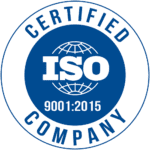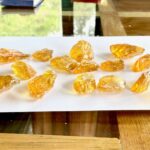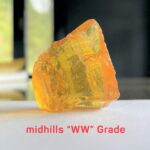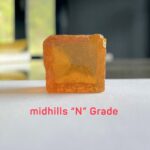GUM ROSIN
X/WW/WG
CAS: 8050-09-7 EINECS: 232-475-7 FEMA: N/A HS.CODE: 38061010
Molecular Formula: C19H29COOH Molecular Weight: 262.4302
Product Information:
The major product obtained from oleo pine resin is Gum Rosin. It remains behind as the in-volatile residue after distillation of the turpentine and is like a brittle, transparent, glassy solid.
It is insoluble in water but soluble in many organic solvents. It is graded and sold on the basis of color, the palest shades of yellow-brown being the better quality. Several other chemical characteristics influence the quality and these are largely dependent on the species of pine from which the gum rosin is obtained, i.e., they are determined more by genetic than environmental and processing factors.
Although several other criteria determine gum rosin quality and acceptability for different applications, color and softening point are usually sufficient indicators of quality to satisfy purchasers of rosin from traditional and proven sources.
Gum Rosin is graded on the basis of color, the palest being the most desirable and designated WW* (‘water-white’). This grade and the slightly lower grade WG (‘window-glass’) are the most commonly traded rosins. A superior grade, X, is in demand because of its light colour. Darker grades are N, M, K, I, H and lower.
Rather than a crystalline solid, Gum Rosin is like a glass and the point at which is softens when heated is referred to as the softening point (rather than melting point). A softening point in the range 70- 80°C is usual, the higher end of the range representing the better quality.
Quality criteria:
Since gum rosin is an acidic material and the manufacturer of downstream derivatives depends on its acid functionality, a high acid number (and saponification number) is also an indication of good quality.
The better quality Gum rosins usually have an acid number in the range 160-170. Provided that the acid number is high, the detailed resin acid composition of rosin is usually of little consequence or interest to the end user.
Gum Rosin Packing and Storage:
Packaging:
- Iron Drum, 200 kg net each.
- Paper Bag, 25 kg net each.
- Iron Tins,17 Kg net each.
Storage:
- avoid contact with light
- keep separated from incompatible substances
- store and handle in accordance with all current regulations and Standards
- cool, dry place should be used for storage.
- place in a tightly closed container

Specifications(WW):
Colour Light Yellow Softening Point, R&B, °C 76 min Acid Value, mgKOH/g 166 min Ash, % 0.03 max Insoluble in alcohol, % 0.03 max Unsaponifiable matter, % 5 max
* We Accept customized OEM services
Gum Rosin applications and uses:
- Gum Rosin and its chemical derivatives are used chiefly to make soaps, varnishes, sealing wax, printing inks, driers, sizes for paper, adhesives, binders, soldering fluxes, gloss oils for paints, and pitch for casks.
- adhesives industries widely use Rosin as a ingredient in because of its properties.
- in the electric equipment industry rosin is used as an insulation material.
- for the chewing gum industry rosin is firstly converted into hydrogenated rosin and then used in manufacturing process.
- Rosin because of its properties is mainly used as a soldering aid and metal polishing agent.
- for the paint industry rosin is a basic material .
- Rosin paper sizing agent can prevent the printing oil soaking and dispersing from paper,it also improves the strength and smoothness of the paper and enhances the anti-abrasion of paper.
- it is the main ingredient of depilatory wax.
- in the synthetic rubber industry rosin is used as the softener.
- it also takes an important role in producing road coating, rosin firstly converted to rosin malefic ester or polymerized rosin or disproportionate rosin, Polyols ester, and then as a result used to make the thermoplastic coating for road sign injunction.

















